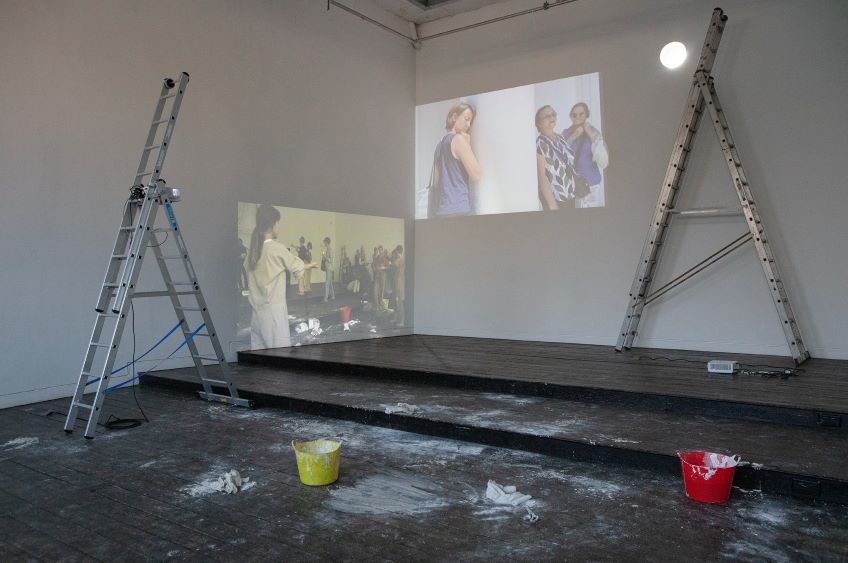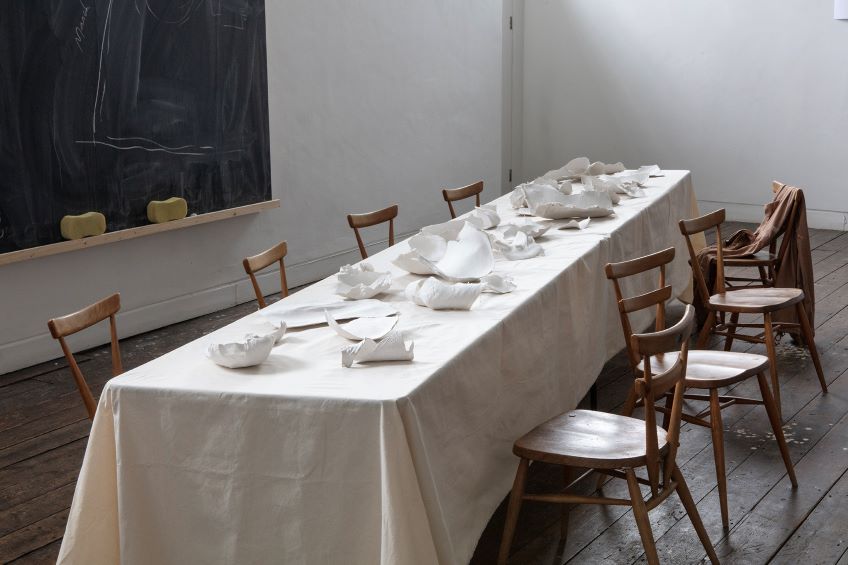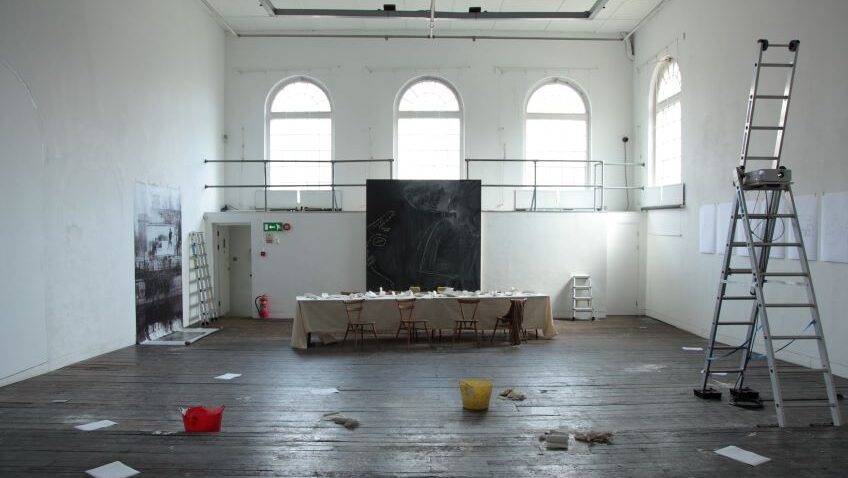Joyce Glasser reviews Past Present: Fragments of Memory: Bucharest-Pompeii-London
(on until August 12, 2023) Beaconsfield Gallery, London
If you a looking for a new experience in gallery going where your imagination and intellect are stimulated to meet the artists’ half-way, then a thought-provoking, exhibition at the lovely Beaconsfield Gallery awaits you.
It is timely, too, when a few miles away the celebrated, visionary 1972 social housing estate by Alison and Peter Smithson, Robin Hill Gardens, is losing its battle with the bulldozer for a sorry replacement. Democratic countries have planning controls in place, although the UK is on a slippery slope. The situation was worse in the 1970s under Romania’s dictatorship. Past Present emerges out of one of the greatest unpunishable postwar crimes in Europe, all but forgotten, even in bustling Bucharest.
Work on The House of the Republic (now, The Palace of Parliament or the People’s House) in Bucharest began in 1978, inspired by the North Korean capital Pyongyang and President Kim Il Sung’s palatial residence begun in 1976. Romania’s dictator, Nicolae Ceaușescu, was a great admirer of North Korea.

Ceaușescu’s ecological and architectural disaster was (and is) the heaviest building in the world and the second largest administrative building in the world for a country of only 20 million people. Even today, when housed with the two chambers of Parliament, events rooms, three museums, conference centres and offices for international bodies, a whopping 70% of the building is empty. The irony is that Ceaușescu and his wife never enjoyed their self-aggrandising folly, completed in 1997. They were executed by firing squad in 1989.
This was no consolation to the thousands of families who survived the clearance of a huge area known as Bucharest’s Uranus Hill Quarter, to make way for the monument to power. They lost their homes, their businesses, their schools, parks, centuries old churches and synagogues and even an art-deco sports stadium. When the hill itself was demolished, a burial site for plague victims was discovered like an unheeded warning. What was the flourishing, beautiful old town was erased from history; reduced to ashes.
In her collaborative exhibition, described as a “moving archive,” architect-photographer and conceptual artist Ioana Marinescu compares Uranus Hill to the disappearance of Pompeii. That said, geology and archaeology have preserved some of the ancient ruins. Visitors to the gallery are likely to see plaster casts on a banquet table, the table reflecting the films playing downstairs where former residents with memories of the evictions reminiscence over a meal in the park opposite the Palace and share their memories.
On opening night Marinescu’s collaborators were taking casts of one another in a solemn, ritualistic manner, choreographed by Hanna Gillgren, to look like a battlefield with the movements of the actors expressing the trauma of losing a home, a livelihood, neighbours, hopes and dreams with, in some cases, no notice given. The
suddenness was akin to the suddenness of Pompeii, but here, the heartless calamity was manmade.
That these plaster casts look like sheets of paper is no coincidence. All that remains of this once thriving city within a city are witness statements, words on paper or tape. During the opening night performance dancers/actors moved around the room reciting words which were hard to hear due to the crowd movement on the old floorboards, but they sounded like chants, and to some extent, the equivalent of the frescos found on the walls in Pompeii. They take us on recalled tours of the area, mentioning gardens.

Dramaturg Phoebe von Held, architect Thomas Goodey and sound artists Doru Apreotesei and David Crawforth create an abstract imaginary space attempting to connect past with present. A large screen on the back wall plays a film on a loop of a dancer in the ruins of Pompeii, clinging to the shells of streets and homes remaining, more than what remains in Uranus Hill. At one point the arched door opens to reveal the vista of the gallery’s garden and the railway that runs alongside.
Beaconsfield Gallery on Newport Street (not to be confused with Damien Hurst’s Newport Street Gallery also in Vauxhall) is a beautiful, municipal-looking brick building on a leafy street near the Thames. The gallery was chosen for its metaphorical as well as its aesthetic and practical properties. For the building is all that remains of the Lambeth Ragged School, demolished to make way for the railway. The memory of the school lives on in the building, merging now with these Romanian memories.
When we were eventually ushered down to the “arch,” a barrel vaulted cellar, for a performance with a specially built wooden structure pushed by a collaborator with two dancers weaving precarious routes in and out of the structure it was reminiscent of a bulldozer literally and figuratively crushing people in its path. The unmistakable sounds of the railway above our heads adding to the atmosphere; luring those memories back to life.
The project, which began in 2017, is still a work in progress. It changes with every venue and every year and represents years of research. Like a sculptor chipping away to uncover new forms and meaning and identities, Marinescu, with Smaranda Găbudeanu and Iulia Mărăcine, continue reworking their “exhillation” as they call the exhibition, since the process is not over. What you find when you visit is part of this process, next experienced at the SAC Gallery in Bucharest.
Beaconsfield Gallery: 22 Newport Street Vauxhall, London SE11 6AY – Wed-Sat 12-5 or by appointment.




